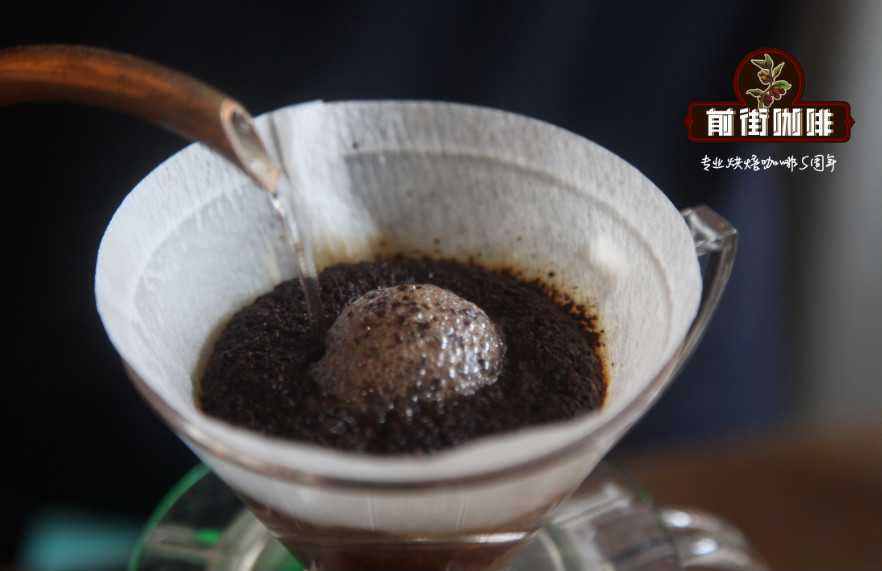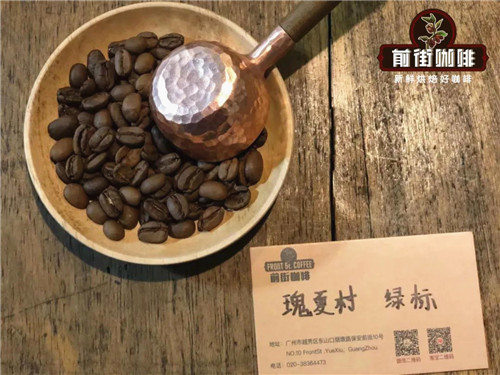Mayuca Manor in Cauca Valley, Colombia introduces what is the most popular variety of coffee grown in Cauca, Colombia.

Country: Colombia ((Colombia))
Producing area: Cauca Valley (Valle del Cauca), Cassedonia Town (Caicedonia)
Manor: Hacienda Mallorca Manor
Variety: Caturra
Altitude: average 1600 m
Treatment: sun treatment
Flavor description: wine, sweet fruit notes, sugar fried chestnuts, brown sugar, orange peel aroma, sweet finish, smooth and clean taste, long finish.
Introduction:
The Hacienda Mallorca estate, which is run by Santiago Londo ñ o, is owned by his father and his uncle and has been growing coffee since 1932. The estate is in the Valle del Cauca valley, near the neighboring border producing town of Caicedonia, where his family has produced a lot of raw coffee beans and owns several estates for many years. After completing his MBA studies, Santiago Londo ñ o decided to return to work at the Hacienda Mallorca estate and start a sustainable project. During this time, he replanted shade trees. Santiago Londo ñ o has taken over the coffee estate and is already the fourth generation heir. The Hacienda Mallorca estate currently has a total of 51 hectares, with 50% Caturra,30% Geisha and 20% Yellow/Pink Bourbon., coffee varieties in the harvest season, with a total of 50 employees harvesting. According to her accumulated experience over the years, she will be divided into 19 different washing grades and flavors, 6 honey treatments plus 6 different sun exposure, to provide a variety of choices for buyers around the world.
.
Hacienda Mallorca manor mainly grows Kaddura (Caturra). Four years ago, his family decided to plant Geisha and Yellow Bourbon, which are rarely grown in Colombia. These two varieties of coffee are shaded by banana trees. Banana trees are also used to observe the effects of sun shade on coffee growth and harvest. Banana trees not only provide soil moisture, but also slow down the ripening rate of coffee fruits. Make the coffee flavor more ideal and excellent. In the operation and management of the manor, Santiago must adopt new raw bean treatment methods, such as sun and honey treatment. On the one hand, it can use different treatments to test special flavors, and it can also diversify its products to meet the needs of the market. Santiago manages the manor, focusing on the details of each production batch to improve the quality of coffee production and traceable surnames. Set up a constant temperature warehouse and place each batch of raw beans at 19 degrees C. Each batch of raw beans cooked in the warehouse is sent to Caf é Y Procesos, a nearby quality cup testing company, to assist in cup testing and grading, which helps to grade and mix three kinds of mixed beans and sell them on the market. This batch is the description of the sun flavor of Caturra varieties: wine, sweet fruit notes, sugar fried chestnuts, brown sugar, orange peel aroma, sweet finish, smooth and clean taste, long finish.
.
The main coffee producing areas in Colombia are: Huila (San Augustin), Narino, Tolima, Popayan (Cauca), Valle de Cauca, Meta, Antioquia (Medellin), Magdelena (Sierra Nevada), Boyaca, Santander (Bucaramanga) and so on. Columbia University? It is documented that 700 million coffee trees are planted in plantations, 66% of which are planted in modern plantations, and the rest in small, traditionally run farms. The main varieties include Kaddura Caturra, Colombia Colombia, Tibica Tipica, Bourbon Bourbon, Elephant Bean Maragogype, and Tabi. Farms and cooperatives throughout the country, big or small, are distributed in more than 500000 municipalities and 14 major coffee-producing areas. A total of 2 million Colombians depend on coffee cultivation for a living, contributing 12.5 per cent to gross domestic product. In the early 1960s, coffee production was about 600 kg per hectare, but now it has increased to about 900 kg. The farm can reach 2500 kilograms. Colombia established the National Coffee Management Association in 1927, which is responsible for quality supervision. Although the association is a private organization, it acts on behalf of the government. In addition to organizing the industry, the association is also responsible for the control of coffee prices and responsibilities such as health care, education, road construction, hiring planting technicians, conducting investigations, supervising product quality, and directly managing the export business of 50% of the total export volume. Hire marketing staff and other duties. Like the National Coffee Management Association in Kenya, is it coffee? Weave a model of management.
Important Notice :
前街咖啡 FrontStreet Coffee has moved to new addredd:
FrontStreet Coffee Address: 315,Donghua East Road,GuangZhou
Tel:020 38364473
- Prev

How does Rosa Village Green label Rose Summer Flavor in Ethiopia characteristics of Rosa Coffee beans in Rosa Village Manor
Country of origin: Ethiopia: Banchi Magi, southwestern Ethiopia (Bench Maji) varieties: single Gori variety manor: rose summer village (rose summer village) manor (Gesha Village Estate) manor owner: Adam Overton, Rachel Samuel block: Xihua block (Shewa-Jibabu) altitude: average 1900 to 2100 m grade: water
- Next

Malawi rose summer double anaerobic fermentation processing flavor how Malawi rose summer from where
Malawi rose summer variety is transplanted from Ethiopia's superior ancient original variety to Malawi cultivation, because of the geographical environment and natural climate influence, its coffee beans and flavor is very different from Ethiopia, this micro-batch is sun rose summer, through the wine double anaerobic secondary fermentation, showing a strong wine flavor, coffee aroma is very charming, rich multi-level mouth
Related
- Detailed explanation of Jadeite planting Land in Panamanian Jadeite Manor introduction to the grading system of Jadeite competitive bidding, Red bid, Green bid and Rose Summer
- Story of Coffee planting in Brenka region of Costa Rica Stonehenge Manor anaerobic heavy honey treatment of flavor mouth
- What's on the barrel of Blue Mountain Coffee beans?
- Can American coffee also pull flowers? How to use hot American style to pull out a good-looking pattern?
- Can you make a cold extract with coffee beans? What is the right proportion for cold-extracted coffee formula?
- Indonesian PWN Gold Mandrine Coffee Origin Features Flavor How to Chong? Mandolin coffee is American.
- A brief introduction to the flavor characteristics of Brazilian yellow bourbon coffee beans
- What is the effect of different water quality on the flavor of cold-extracted coffee? What kind of water is best for brewing coffee?
- Why do you think of Rose Summer whenever you mention Panamanian coffee?
- Introduction to the characteristics of authentic blue mountain coffee bean producing areas? What is the CIB Coffee Authority in Jamaica?

